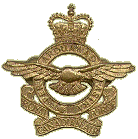AS YOU WERE . . .
WAR YEARS ECLECTICA
JOIN OUR FACEBOOK GROUP HERE
July 2015 Edition
Bad day turns out good
B-17 -- FLYING FORTRESS MIRACLE!!!
|
and a German fighter over the Tunis dock area, became the subject of one of the most famous photographs of WWII. An enemy fighter attacking a 97th Bomb Group formation went out of control, probably with a wounded pilot, then continued its crashing descent into the rear of the fuselage of a Flying Fortress named "All-American" -- piloted by Lt. Kendrick R. Bragg, of the 414th Bomb Squadron. |
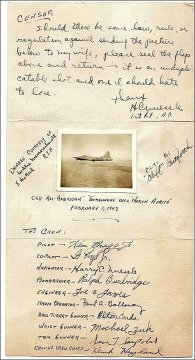 .
.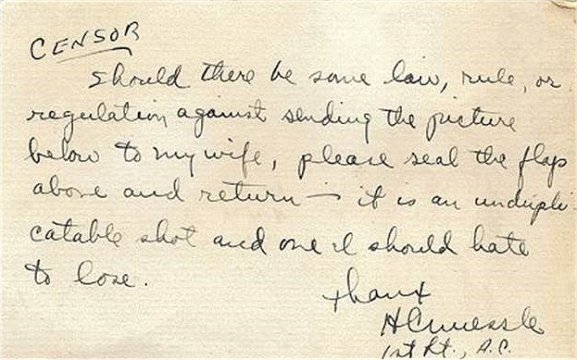
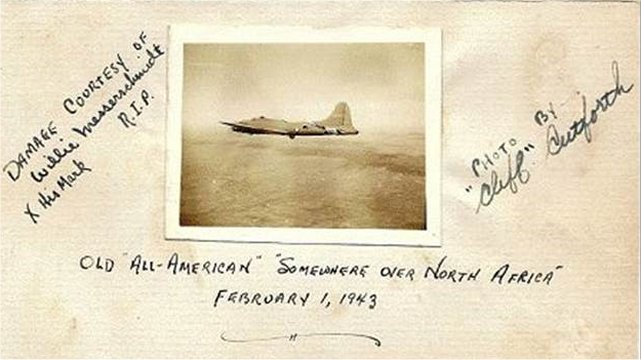
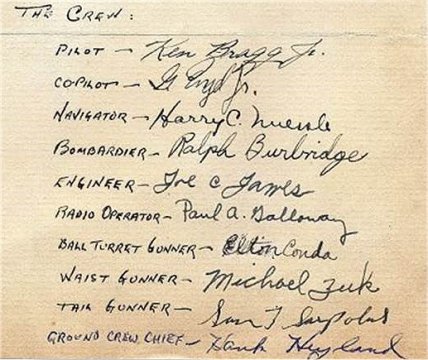
|
The left horizontal stabilizer of the Fortress and left elevator were completely torn away. The two right engines were out and one on the left had a serious oil pump leak. The vertical fin and the rudder had been damaged, the fuselage had been cut almost completely through connected by only at two small parts of the frame. The radios, electrical and oxygen systems were damaged. There was also a hole in the top that was over 16-feet long and 4 feet wide at its widest. The split in the fuselage went all the way to the top gunner's turret. |
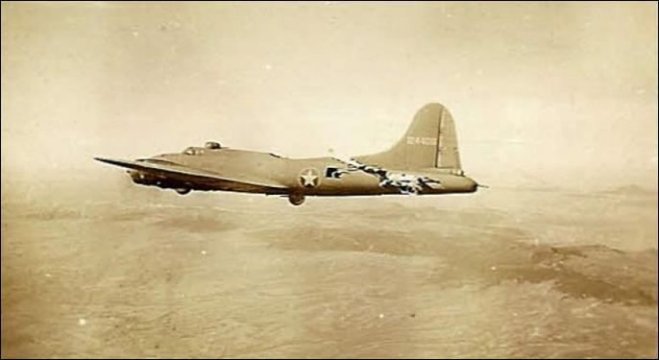
|
and twisted when the plane turned. All the control cables were severed except for one single elevator cable that still worked. Miraculously the aircraft still flew! The tail gunner was trapped because
While the crew was trying to keep the bomber from coming
apart,
|
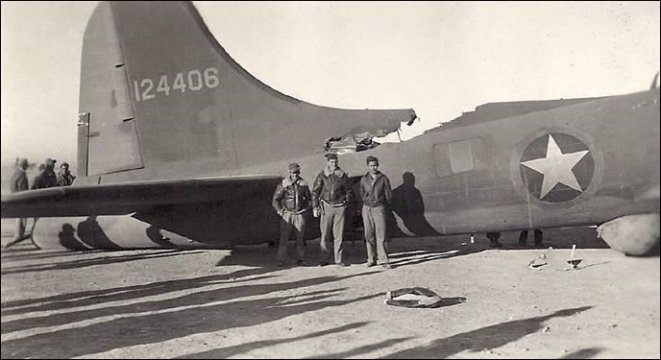
|
the wind turbulence was so great that it blew one of the waist gunners into the broken tail section. It took several minutes and four crew members
The weight of the gunner
The turn back toward England had to be very slow
For a brief time, two more Me-109 German fighters
The two waist gunners stood up
|
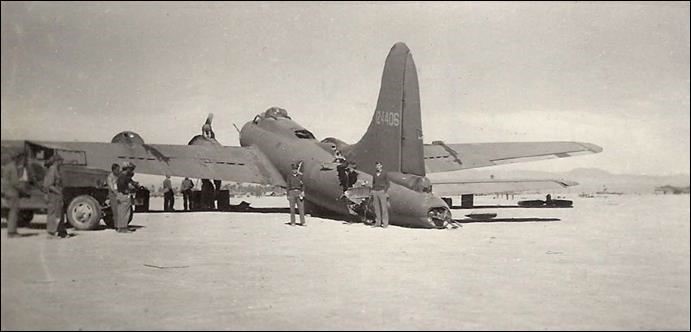
|
as it crossed over the Channel and took one of the pictures shown. They also radioed to the base describing that the appendage was waving like a fish tail They reported that the plane would not make it and requested that boats be sent out to rescue the crew when they bailed out. The fighters stayed with the Fortress,
|
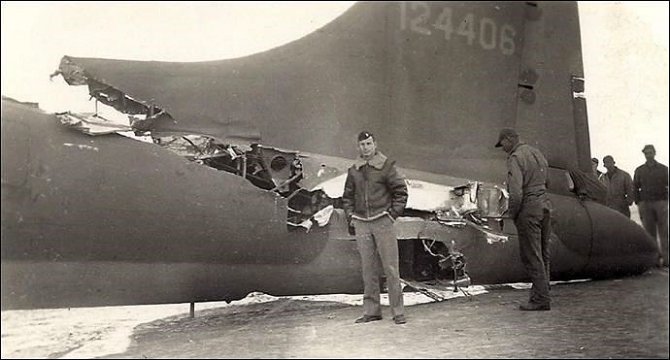
|
to line up with the runway while it was still over 40 miles away. It descended into an emergency landing and a normal roll-out on its landing gear. When the ambulance pulled alongside, it was waved
off because
The Fortress sat placidly until the crew all exited
through the door in the fuselage
|
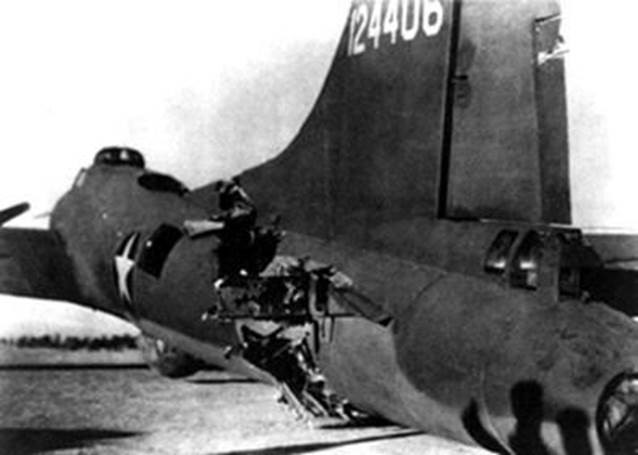
|
B-17 "All American" (414th Squadron, 97BG)
Crew
|
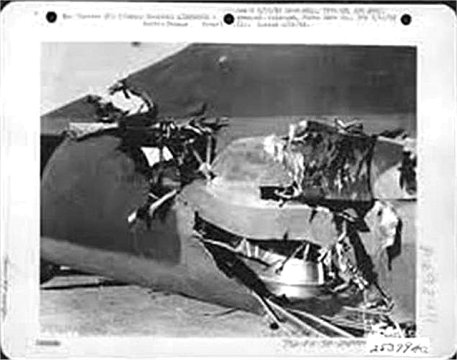
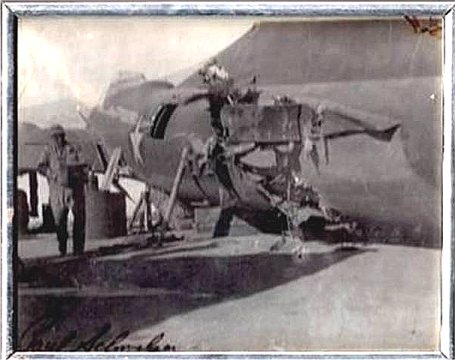
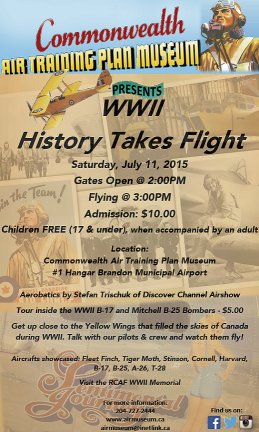 |
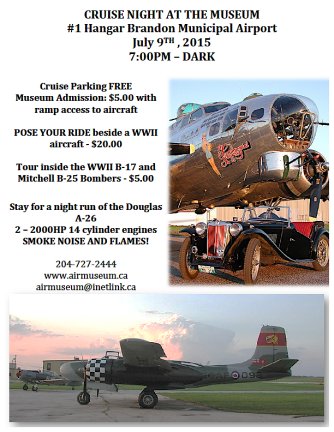 |
B-17
SENTIMENTAL JOURNEY ADVENTURE
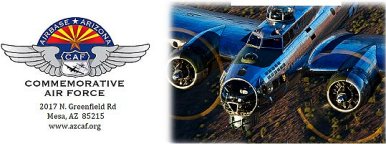
Manitoba Flight :: Part
I :: Part
II :: Part
III

Museum Cruise
Night
![]()
FROM
OUR AIR SHOW SITE
B-17
Sentimental Journey Flight I: Leaving Winnipeg
B-17
Sentimental Journey Flight II: Arriving in Brandon
B-17
WWII Miracle Flight
CATP
Museum Cruise Night
CATP
Museum Air Show in the Press
The CATP Museum Air Show:
WWII
HISTORY TAKES FLIGHT
More
Photos
![]()
BACK TO OUR MONTHLY MILITARY WEBZINE
CONTENTS PAGE
As
You Were . . .
![]()
|
As You Were . . . Tribute Webzines |
Hillman WWII Tributes www.hillmanweb.com/war |
www.hillmanweb.com/rcaf RCN HMCS PRINCE ROBERT www.hillmanweb.com/rcn |
Ex-Air Gunners Association Magazines |
 .
.